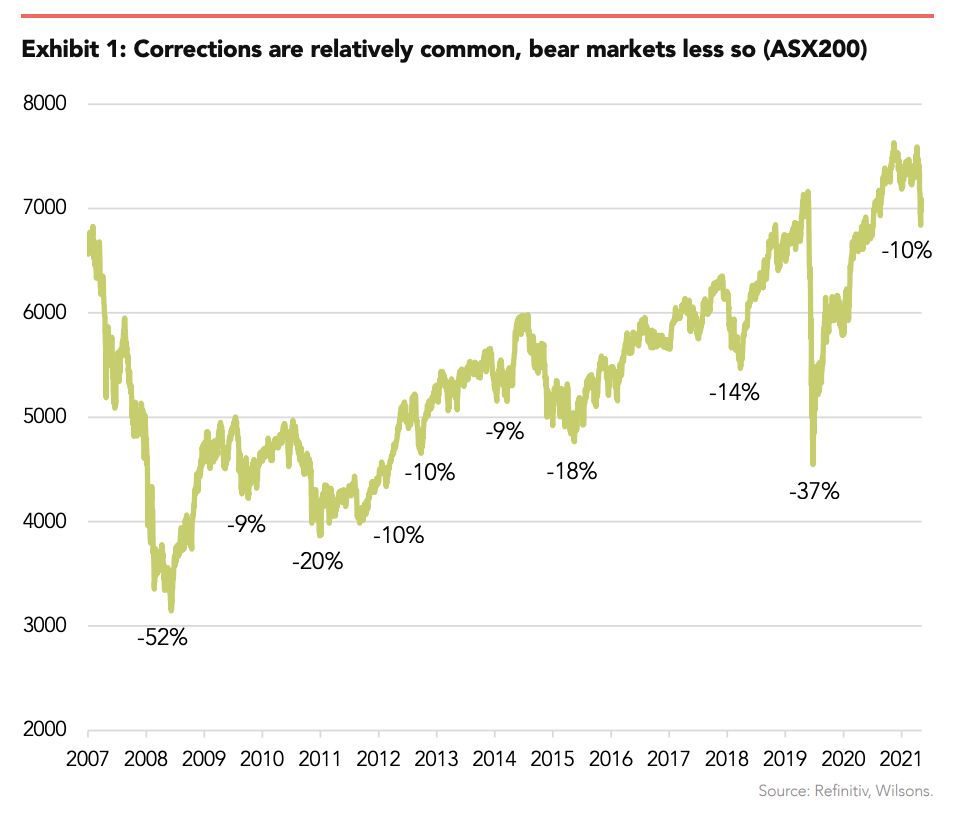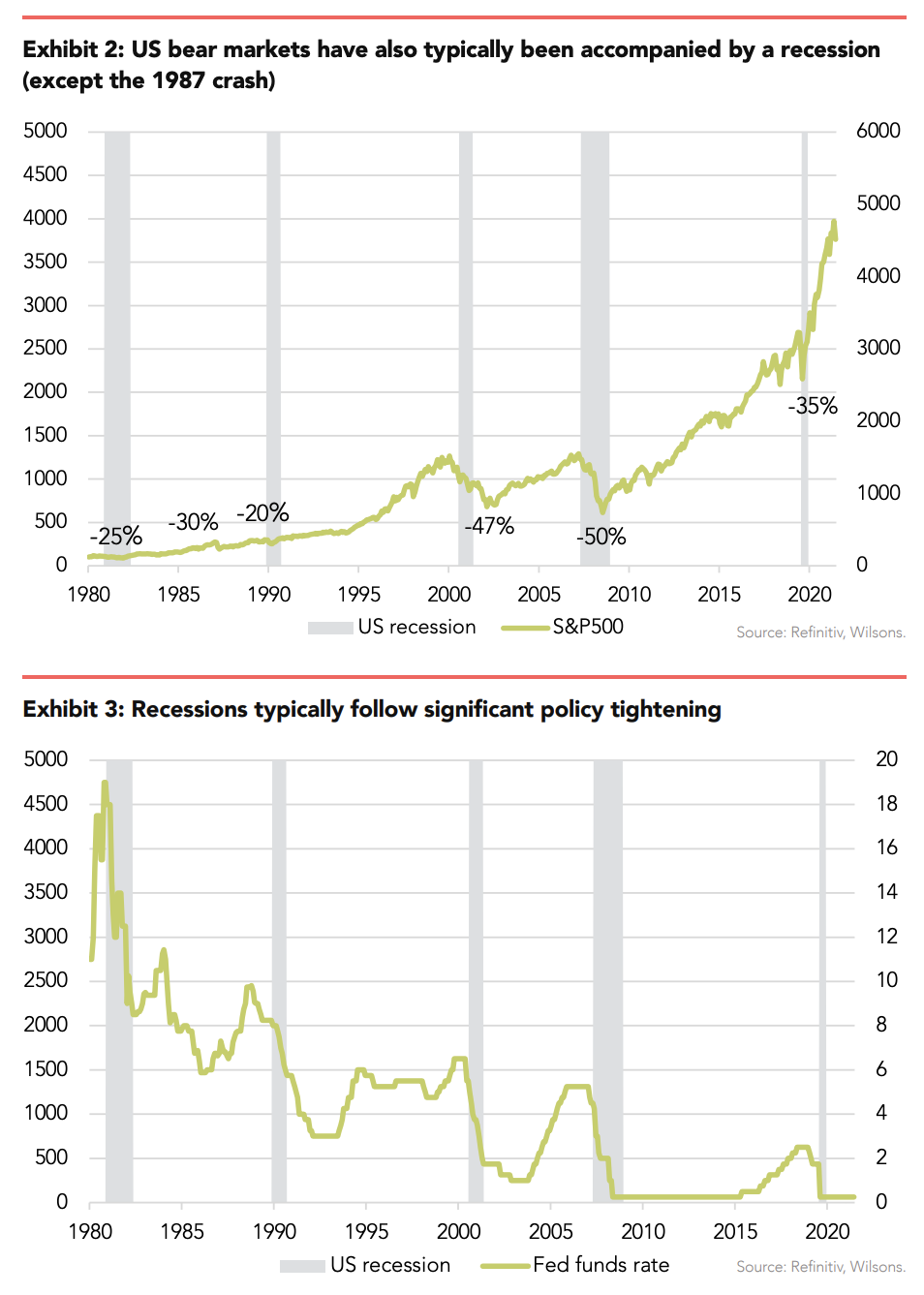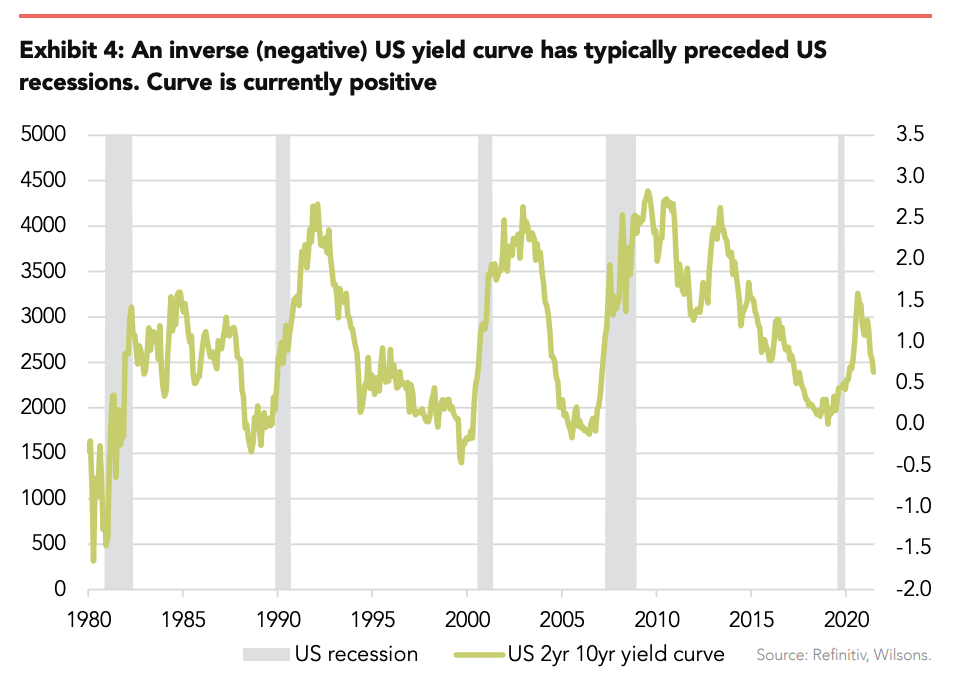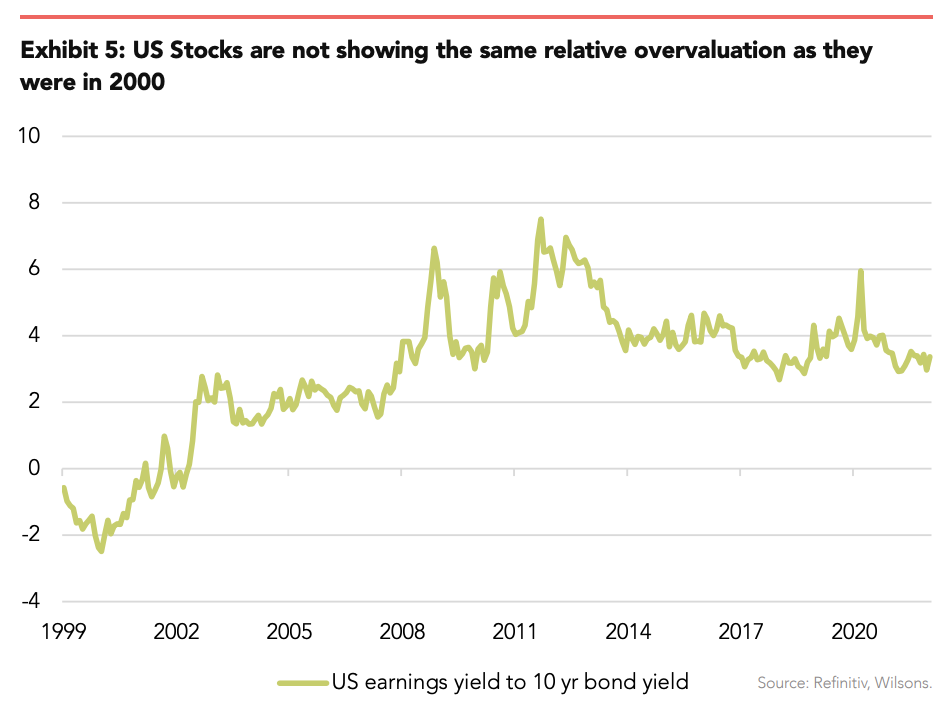Is this a correction or a sign of a bear market?
January saw the largest equity
correction since the dramatic March
2020 COVID sell-off. In January,
US and Australian stocks both
briefly touched the 10% “technical
correction” level.
Both markets have rebounded off their correction lows, though volatility is persisting. Other markets such as the UK, Europe, and emerging markets (EM) have all experienced shallower corrections.
While a US equity correction was well and truly overdue, investors are understandably concerned that the recent “short-sharp” correction could morph into something deeper and longer.
The hawkish shift in Fed policy rhetoric is making investors nervous, particularly when it is occurring against a backdrop of a 40-year high in the US headline inflation rate. Comments from a number of high profile “perma-bears” that the US market is set to crash are nothing new but tend to get more airtime when markets are under pressure.
While the debate around whether the recent pullback represents a temporary correction or the start of a more protracted bear market phase will undoubtedly continue for a while yet, we would emphasise the following points:
- “Corrections” are quite common even in bull markets (See exhibit 1). Based on historical patterns, a US and Australian equity “correction” was well and truly overdue.
- Genuine bear markets occur fairly infrequently relative to corrections.
- Bear markets have almost always coincided with (US) recessions.
- US recessions almost always coincided with a “significant tightening” of Fed policy.
- A tight policy backdrop is not currently in place. Policy is beginning to tighten but remains very easy.
- Even looking ahead 12 months, policy is still likely to be on the easy side of neutral.

Monetary policy and business cycle backdrop generally the key
While recessions are hard to predict, the current policy backdrop and the likely path of policy suggest that the risk of US recession is low over the next 12-18 months. Indeed, growth is likely to be above trend in 2022 and at least trend-like in 2023, given the amount of stimulus still working its way through the system.

The US yield curve has historically been one of the best indicators of a recession (with an approximate 12-month lead). While the curve is beginning to flatten from steep levels it is still decidedly upward sloping and hence not suggesting a recession is an imminent risk (exhibit 4).

Correction still the most likely scenario
Our best assessment is what we have seen is more likely to be a corrective phase in an ongoing uptrend for stocks. It is, of course, very difficult to say if the recent lows are indeed the lows for this correction phase. To the extent that the recent correction was both short and mild, even by the standards of bull market corrections, it is quite possible that we could have a lower low ahead of us. This is particularly so for the interest-rate-sensitive, tech-heavy US market.
Near-term risk is also heightened given
that we have to negotiate another couple
of Fed meetings (mid-March and late
April) before we are likely to get any
discernible relief on the inflation front.
So we retain a degree of tactical caution.
Nevertheless, our view is that despite the
risk of volatility continuing, the 12-month
outlook remains positive. This is based
on an expectation that US inflation
pressure should ebb rather than intensify
as we progress through the year. Growth
should continue to be solid, and Fed
monetary policy is likely to be at least
18 months (quite possibly longer) from
reaching even a “neutral” level.
Could “moderate tightening” pop US valuations?
One argument for more caution is that US stocks (and quite possibly US bonds) have a significant valuation problem. The notion that US stocks are still reasonable value is in part conditioned on bond yields staying low, as the US market PE multiple is still relatively high in a long-term context. Thus, a significant and sharp upward shift in yields (and/or a faster pace of Fed tightening in coming months) could pull the rug from under the US market, even though the real economy may continue to do ok.
This scenario cannot be completely discounted. Perhaps the closest example to this is the 1987 crash, where after an explosive run-up, stocks corrected very dramatically against a backdrop of only moderate Fed tightening with no “follow-on” recession. In another example of a sharp “valuation correction”, market fears (ultimately unfounded) of an impending inflation surge in 1994 saw a big bond market sell-off. This resulted in a significant correction for stocks. In 1994 the (pre-tech) US market fell but actually proved fairly resilient (falling just under 10%); however, the Australian market corrected a hefty c20%. We expect the US would be more vulnerable to a significant bond market sell-off than Australia this time around. Once again, as we discussed in last week’s quarterly, we see moderate upside for bond yields in 2022 but not a 1994 style sell-off.
The US tech bear market of 2000/01 was in part a valuation-driven bear market, but the tech wreck - which began in 2000 - did follow a significant amount of Fed tightening, which led into a US recession in 2001. So, the tech bear market did “follow the script” of overtightening and recession to a significant extent.
It is worth reinforcing that a significant valuation correction is already occurring “within” the US equity market. The ultra-high multiple tech segment has been under significant selling pressure since mid-November. The broader US market index is holding up much better in part because most of the mega-cap US tech stocks that are important for the path of the S&P500 generally do not have the same nose bleed multiples and are, for the most part, still posting impressive earnings (e.g. Microsoft, Apple, Alphabet, and Amazon).
In aggregate, we do not see the US
market as being overly expensive when
we adjust for current low bond yields
or even on the basis of our expectation
of moderately higher yields. Valuations
outside the US actually look quite cheap
in our view. We are overweight Australia
and the rest of world vs the US. So, while
parts of the US market are experiencing
an overdue valuation unwind, we do
not believe equities have a genuinely
broad-based valuation problem.

Staying vigilant and diversified but still sticking with stocks
Of course, if bond yields sell-off significantly in coming months, and/or the Fed takes an even more hawkish turn than currently priced, then equities could be vulnerable. As discussed in last week’s quarterly outlook, we expect some signs of easing in inflation pressures from Q2 onwards – which should keep the bond market sell-off orderly, and the Fed’s tightening cycle in check. We still expect some upward pressure on bond yields (via real rates) over the balance of 2022 as quantitative easing (QE) progresses to quantitative tapering (QT), but not enough to derail moderate equity gains.
We remain of the view that the recent pullback is more likely to be an overdue correction than the front end of a bear market. We will continue to watch for signs that challenge this thesis, but for now, we continue to see 12-month equity market prospects as decent. We remain well-diversified both in terms of being underweight US equities versus the rest of world, as well as holding an overweight in uncorrelated alternatives, while we remain underweight fixed interest.
Realise your ambition
At Wilsons, we think differently and delve deeper to uncover a broad range of interesting investment opportunities for our clients. To find out more, visit our website.

